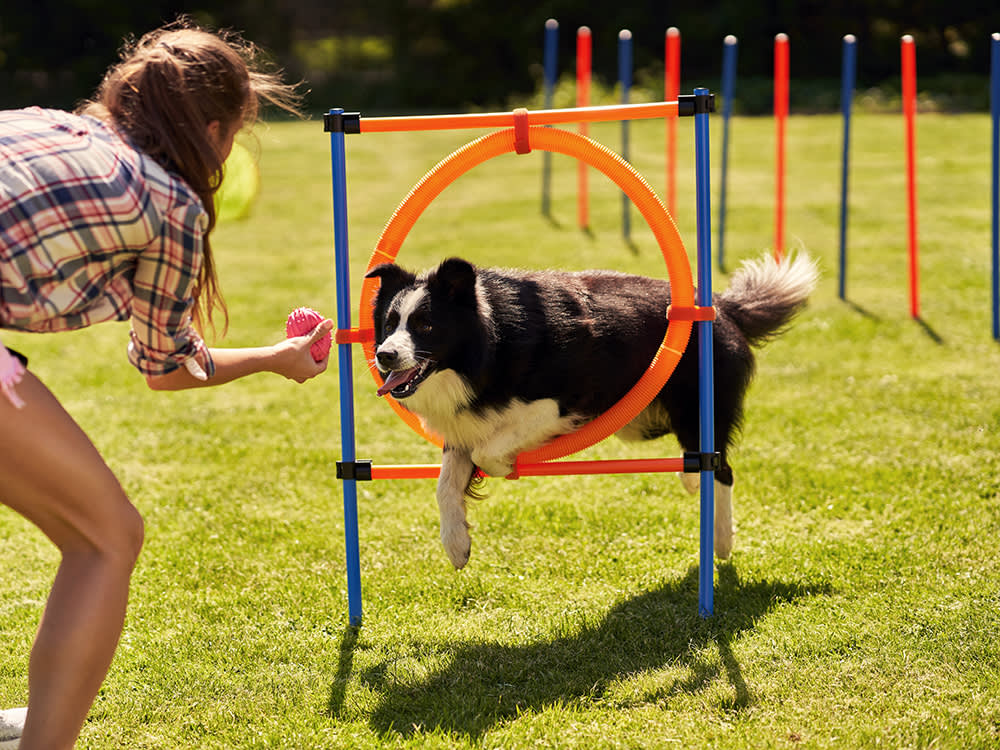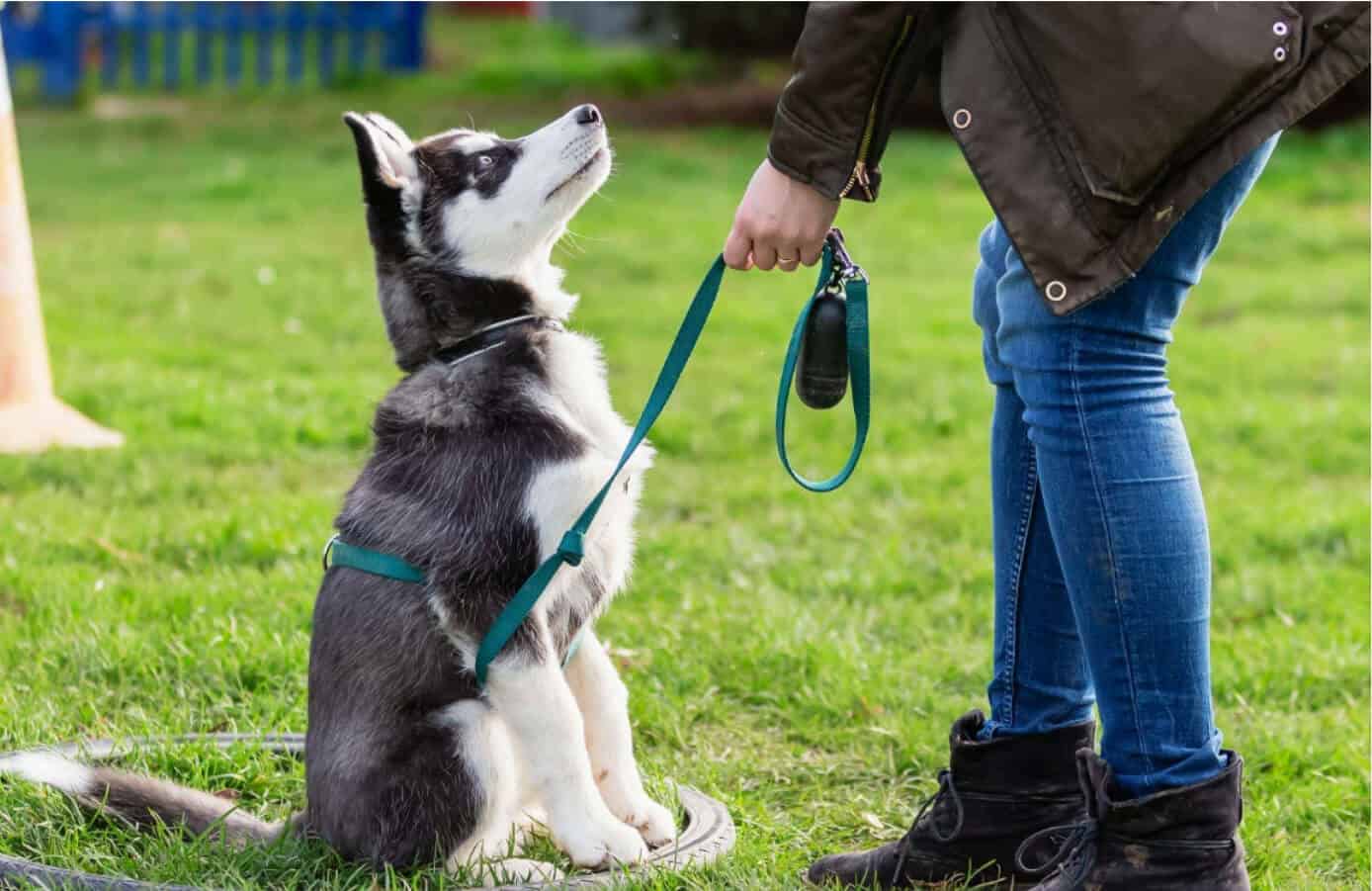Step-by-Step Approach to Dog Training: Simple Tips for Every Dog Owner
Step-by-Step Approach to Dog Training: Simple Tips for Every Dog Owner
Blog Article
Beginner's Overview to Successful Pet Dog Training in your home
Effectively educating a dog at home calls for a nuanced understanding of canine actions and efficient communication approaches. Establishing clear training goals, making use of high-grade benefits, and maintaining uniformity throughout family members are crucial elements. Integrating training right into day-to-day routines can enhance both interaction and retention.
Recognizing Canine Behavior
Recognizing pet actions is essential for effective training and fostering an unified relationship in between human beings and their canine friends. Dogs connect largely with body language, articulations, and faces, making it crucial for proprietors to translate these signals precisely. Recognizing habits such as tail wagging, roaring, or cowering can give understandings into a canine's emotional state and intents.

Typical behavior problems, such as aggressiveness, stress and anxiety, or too much barking, usually stem from misunderstandings or unmet demands. Observing and attending to these problems without delay can avoid escalation and make sure a positive training experience. By promoting a deep understanding of dog habits, proprietors can tailor their training approaches to match their canine buddies, eventually causing a pleased and well-behaved pet.
Necessary Training Devices
A well-appointed training room can considerably improve the effectiveness of pet dog training in the house. Essential training devices ensure that both the trainer and the canine can take part in productive sessions that promote discovering and bonding.

Buying a strong chain and a comfy, well-fitting collar or harness is important for security and control. These devices aid develop borders and make certain the dog stays safe throughout training. Furthermore, an assigned training location, devoid of diversions, aids concentration for both the canine and the instructor.
Training aids such as training pads, cones, or dexterity tools can also improve the experience by introducing variety and obstacles. Having a note pad or electronic application for tracking development can be vital, allowing you to note successes and areas for renovation. Using these important tools will certainly develop a positive training setting and lay the structure for efficient learning.
Creating a Training Routine
Establishing a consistent training routine is crucial for efficient pet dog training in your home. A well-structured routine not just aids in reinforcing preferred actions yet also supplies your pet with a complacency and predictability. To produce an effective training regular, begin by recognizing particular training objectives, such as fundamental commands, leash strolling, or housebreaking.
Pick a marked time daily for training sessions, preferably when your pet dog is sharp and receptive. Sessions should be brief, around 5 to 15 mins, to keep emphasis and protect against fatigue. Consistency in timing and atmosphere will certainly enhance your dog's knowing experience.
Integrate training right into everyday tasks to enhance abilities. Practice commands during walks or mealtime, which integrates learning right into all-natural routines. Furthermore, stay adaptable and adjust the routine as needed, accommodating your dog's power levels and mood.
Positive Reinforcement Methods
Favorable support strategies are fundamental to reliable pet dog training, promoting wanted actions via rewards as opposed to punishment. This technique makes use of positive stimuli, such as deals with, praise, or playtime, to urge canines to duplicate particular actions. The cornerstone of this approach is timing; rewards need to be provided right away complying with the preferred behavior to create a clear association.
When carrying out positive support, it is essential to pick rewards that are motivating for your pet. High-value treats, such as little items of chicken or cheese, can be particularly effective during training sessions. Additionally, varying the incentives can maintain your pet's interest and excitement.
Begin with easy commands, like "rest" or "remain," and progressively progress to more complicated tasks. Consistency is key; make sure that all member of the family make use of the very same commands and reward systems to stay clear of confusion.
Moreover, it is vital to stay person and stay clear of aggravation. Dogs, like human beings, find out at their own speed. By cultivating a supportive training environment via positive support, you can boost your canine's discovering experience while strengthening the bond between you and your fuzzy companion, laying the groundwork for effective training end results.
Common Educating Challenges
While educating a pet dog at home can be a satisfying why not try here experience, it commonly comes with a collection of typical difficulties that can test both perseverance and uniformity. One prevalent concern is disturbance. Pets might come to be published here easily averted by sounds, activities, and even aromas in their setting, making it tough to maintain their emphasis during training sessions.
One more obstacle is variance in commands and reinforcement. If relative utilize different hints or incentives, it can confuse the canine and impede development. Developing a unified method is vital for effective interaction.
Additionally, pet dogs can experience aggravation or stress and anxiety, particularly if they do not understand what is anticipated of them. This can bring about undesirable actions, such as barking or chewing.
Finally, the timing of reinforcement is essential (Dog training). Postponed incentives can reduce the performance of favorable support, as pets may fail to connect the actions with the benefit
Getting rid of these challenges calls for dedication, clear interaction, and a structured training strategy. Acknowledging and addressing these common obstacles will certainly lead the way for a much more effective and enjoyable training experience in your home.
Conclusion
Finally, successful canine training in your home necessitates a comprehensive understanding of canine behavior and effective communication methods. By developing clear training goals and making use of top quality treats together with favorable reinforcement, the training process becomes a lot more rewarding for both the dog and the fitness instructor. Flexibility, persistence, and uniformity are crucial components that promote discovering. Eventually, integrating training into everyday regimens boosts the bond in between canine and owner, making the experience both satisfying and efficient.
Developing a constant training routine is necessary for reliable pet training at home.Favorable reinforcement techniques are fundamental to effective pet training, promoting desired habits through useful content rewards instead than punishment (Dog training). By fostering a helpful training setting with positive reinforcement, you can boost your pet's learning experience while enhancing the bond between you and your fuzzy friend, laying the foundation for successful training end results
In final thought, effective dog training at home requires a detailed understanding of canine habits and effective interaction strategies. By establishing clear training goals and utilizing high-quality treats alongside positive support, the training procedure ends up being extra fulfilling for both the trainer and the canine.
Report this page